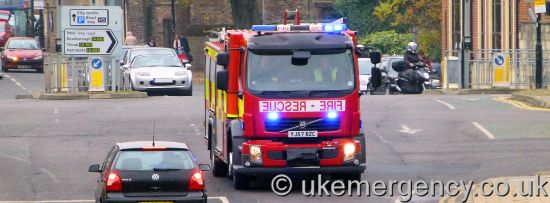Sharing Roads

This is guidance on to what to do when you meet an emergency vehicle using blue flashing lights. The public’s response in such situations can make a huge difference to the time it takes to get to an incident. When confronted by an emergency vehicle using blue lights and/or sirens you should;
Don’t panic
Look and listen
Find a place to pull in
Signal your intentions
Pull in safely, as far as you can
Leave a gap
Stay alert
It is not always the best options to stop where you are. You may actually hinder the emergency vehicle’s progress by doing this. If you stop alongside a traffic island, on a corner, the brow of a hill or on a single carriageway with double white lines down the middle, then the emergency vehicle’s driver will find it much harder to get past. Don’t stop alongside a side road as the emergency vehicle may wish to turn into it. Try not to make rash decisions, and avoid such actions as diving onto the pavement to leave the road clear. If possible, make eye contact with the emergency vehicle driver to assure them that you have seen them. Before resuming your journey, check that there aren’t more emergency vehicles coming.
If you are on a carriageway with two or more lanes, then signal and move to the left hand side. It may not always be necessary to stop or reduce your speed. However, remember that fire engines have typical top speeds of 75 mph and ambulances may not travel at high speed for patient comfort.

If a police vehicle follows you as you move out of it’s way, the officer may wish to speak to you .They will signal their intensions by using one or more of the following: blue flashing lights, flashing headlamps, an illuminated ‘stop’ sign, horn, siren, a left hand indicator and pointing to the left hand side.
If you find yourself stopped at a red traffic light and become the sole vehicle blocking the route of an emergency vehicle, then it may well be worth moving forward a few meters to advance it’s progress. This does not mean driving through the junction, just moving forward by a car’s length if it is safe to do so. This is a motoring offence, but it would be a strong defence to say that you assisted the progress of an emergency vehicle, did not gain from the situation and maneuvered with safety in mind. If in any doubt at all then wait for the lights to change to green before moving out of the way of the emergency vehicle.

This page has been designed to give advice to road users. No responsibility can be accepted for problems caused by following this advice.
